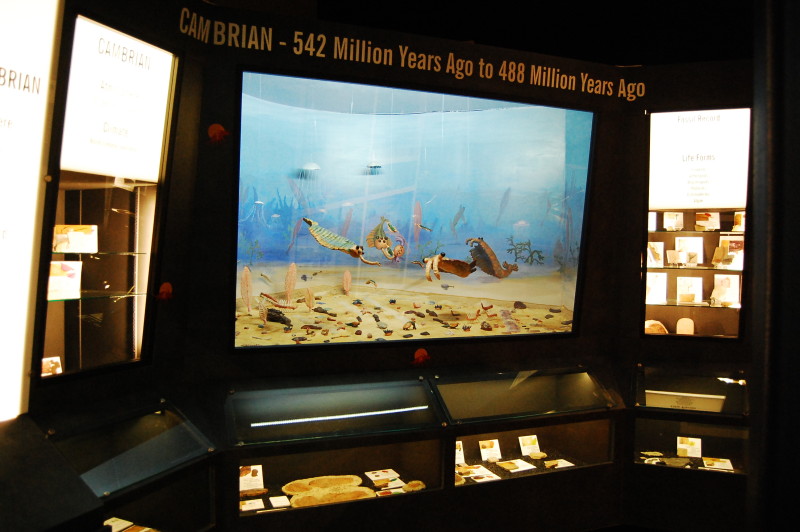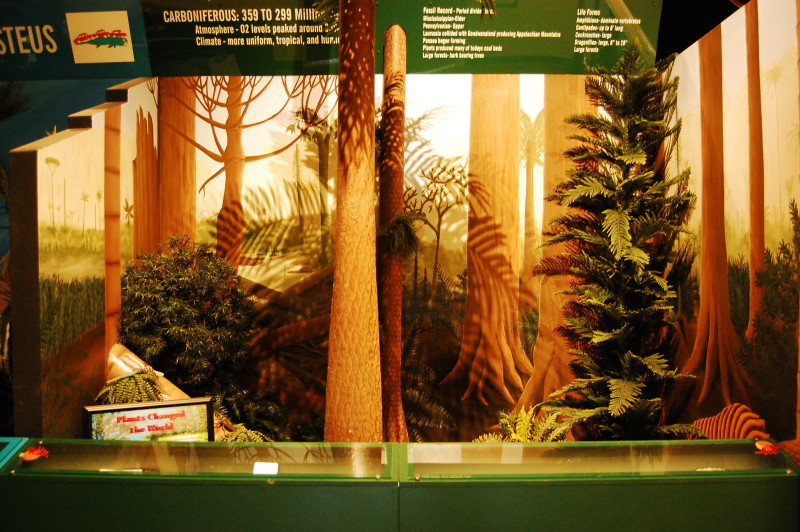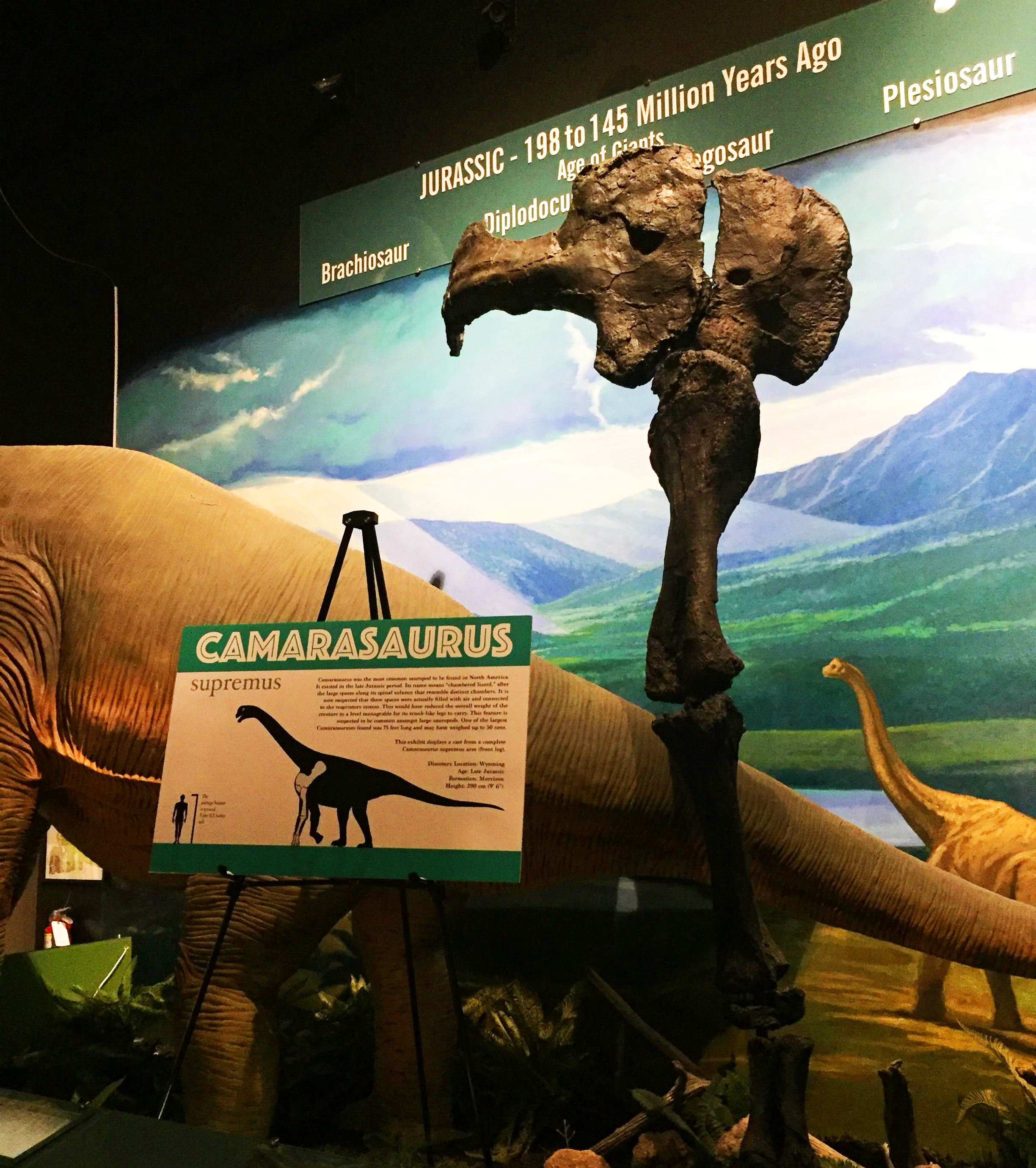Here you will find a comprehensive collection of marine animals, plants, and life forms representing
the Devonian Period. The diorama is a comprehensive representation of the fossil collection. The armored,
exposed skull Placoderm fish lived at this time period. The most dominant Placoderms was the Dunkleosteus.
The Devonian period is known for its diversity and the dominance of fish. The first ray-finned and lobe-finned bony fish appeared at this time, but the placoderms dominated the seas. This period also saw the first free – sporing vascular plants grow on land. These plants later evolved roots and leaves and formed extensive forests. Sharks became more numerous in the oceans. Coral reefs continued to grow and by the end of the Devonian life was everywhere, on land and in the oceans.
The first forests appeared during the Devonian and the Gilboa fossil in case A is from the oldest tree
that dates to this period.
Trilobites were still around and have not changed much since their appearance in the Cambrian. The Fossils that we have in Case B are of the trilobites in their defensive position that is similar to a modern day “Rollie Pollie”.



